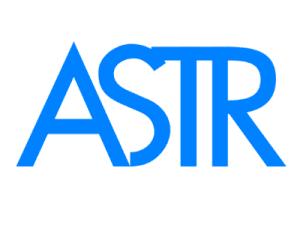End Occipital Neuralgia Pain Naturally: Symptoms, Causes, and Natural Treatment Options
End Occipital Neuralgia Pain Naturally: Symptoms, Causes, and Natural Treatment Options
Occipital neuralgia pain occurs due to problems affecting the third occipital nerve, the lesser occipital nerve, and the greater occipital nerve along their anatomical routes. This type of headache is characterized by chronic pain at the back of the head, upper neck, and behind the ears. The neck pain may also radiate to the skull. The following sections of this article cover the causes, risk factors, and treatments of occipital neuralgia.
What is Occipital Neuralgia?
Occipital neuralgia is a sudden, intense pain that involves one or more of the three nerves:
- Lesser occipital nerve
- Greater occipital nerve
- Third occipital nerve
This sharp, stabbing pain can last from seconds to minutes and results from disorders of the above nerves. The average age for diagnosing occipital neuralgia is 54.1 years, and it accounts for about 8.3% of facial pain cases [1].
Symptoms of Occipital Neuralgia
Clinical signs of occipital neuralgia include the following [2]:
- Sudden, stabbing pain in the neck that may spread to the skull.
- Ongoing and intermittent pain that may occur around the eye sockets.
- Symptoms of cervical sympathetic involvement.
- Eye pain.
- Visual disturbances.
- Dizziness.
- Tinnitus (ear ringing).
- Nausea.
- Nasal congestion.
- Reduced or altered sensation.
- Pain in the occipital region can occur on one or both sides and may extend to the top of the head.
- Tenderness along the paths of the lesser and greater occipital nerves during physical examination.
Causes and Risk Factors of Occipital Neuralgia
Approximately 90% of all cases of occipital neuralgia are related to dysfunction of the greater occipital nerve, while about 10% are due to issues with the lesser occipital nerve. The primary underlying causes include herpes zoster infections and demyelinating conditions. Compression of the lesser, greater, and third occipital nerves at different points along their anatomical routes can also lead to occipital neuralgia [1].
Other causes and risk factors include:
- Poor posture when driving or working on a computer.
- Whiplash injury.
- Herniated discs in the spine.
- Osteoarthritis.
- Muscle tightness.
- Muscle strain due to poor posture.
- Other medical conditions, such as gout and diabetes.
Understanding the Normal Healing Cycle
Before discussing treatment for occipital neuralgia, it is essential to understand the body’s natural healing process. The healing cycle has three main phases: inflammation, proliferation, and maturation, each of which is detailed below [3].
Inflammation Phase
Key signs of inflammation include redness, pain, warmth, swelling, and loss of function in the affected area. During this phase, the immune system works to eliminate pathogens causing the condition.
Proliferation Phase
This phase involves the formation of scar tissue at the wound site. Fibroblasts create collagen, new blood vessels form, and granulation tissue develops. Excessive scar tissue formation may cause myofascial trigger points and fascial restrictions.
Maturation Phase
The maturation phase concludes the healing process and completes wound formation. It involves clearing the affected area of inflammatory agents and other products. In chronic inflammation, which persists longer than acute inflammation, the tissue often cycles between the inflammatory and proliferative phases, without advancing to the maturation stage.
Ineffective Remedies for Occipital Neuralgia
People with occipital neuralgia often try home remedies to ease symptoms, but these usually provide only short-term relief and may worsen the inflammation and proliferation processes. Such remedies include:
- Massage therapy.
- Using a foam roller for massage.
- Applying heat or ice therapy.
- Electrical stimulation in the affected area.
- Strength training exercises during the inflammation phase.
- Stretching.
Effective Treatments for Occipital Neuralgia
Effective strategies for treating occipital neuralgia include:
- Improving posture and core strength.
- Staying active with pain-free activities.
- Performing neck exercises that do not cause pain.
- Addressing inflammation by getting sufficient rest and using specific treatments.
- The MagnaHeal device utilizes magnetic therapy to reduce inflammation. Made from neodymium (a rare earth magnet) and coated with anti-inflammatory materials, MagnaHeal 1 is designed for acute inflammation, while MagnaHeal 2, which has a deeper magnetic reach, is suited for chronic inflammation [4].
- Following an anti-inflammatory diet, including herbs, spices, monounsaturated fats (MUFA), polyunsaturated fats (PUFA), fruits, and legumes, to help control inflammation and alleviate symptoms [5].
- Using the AskASTR program to identify and address nutrient deficiencies.
- Treating the proliferation phase with specific tools: the A1 tool for superficial fascia and aponeurosis restrictions, the A3 tool for surface-level scar tissue and muscle trigger points, and the A5 tool for deeper muscle and fascia restrictions.
Conclusion
Occipital neuralgia is caused by infections like herpes zoster, demyelinating conditions, and nerve compression along their anatomical paths. While common remedies like heat and ice therapy, electrical stimulation, stretching, muscle strengthening, and massage therapy may provide short-term relief, more effective treatments focus on resolving the inflammation and proliferation stages of the healing process. This includes the use of MagnaHeal devices, following an anti-inflammatory diet, and utilizing specialized tools such as the A1, A3, and A5 devices.

